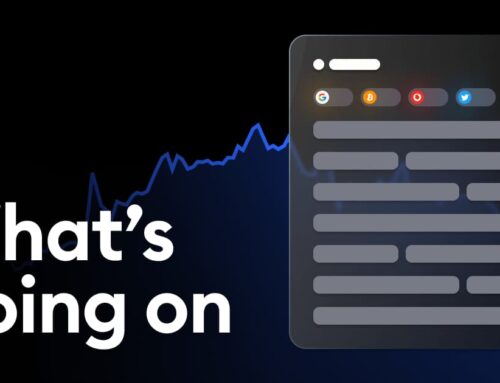Why investors need to brace for volatility this Q4
October 3, 2025
00:01 Speaker A
The fourth quarter is upon us and October has a volatile reputation in the markets, which it has earned.
00:06 Speaker A
It’s where the pressure tends to build and where it often releases. In many years, letting the market sail into a year-end soft-bedded Santa Claus rally, if history repeats itself.
00:15 Speaker A
Today in stocks and translation, we are breaking down the volatile seasonal tendencies of this storied fourth quarter. and let’s start with the beginning with a definition of a market crash.
00:26 Speaker A
It isn’t just a bad day. It is a sudden steep drop that vaporizes value in days or weeks, often fueled by panic and forced unwinds.
00:36 Speaker A
That’s when selling itself causes more selling. And although we’ve seen market crashes in just about every month of the year going back a century, for some reason, some of the big ones have clustered in the second half of the month of October.
00:48 Speaker A
Now, let’s take a look at some of them.
00:51 Speaker A
Nearly 40 years ago in 1987, so-called Black Monday on October 19th became the template for modern panic as a Dow crashed over 20% in one day.
01:02 Speaker A
But on October 24th, 1929, nearly a century ago, Black Monday kicked off the bear market that marked the beginning of the Great Depression.
01:12 Speaker A
Also on the 24th, but in 2008 this time, after the fall of Lehman Brothers amid the global financial crisis, the VIX volatility index hit an eye-watering 89.53 an all-time high that survives to this day.
01:26 Speaker A
Then on October 27th in 1997, we had a mini crash, which triggered the first market-wide circuit breakers in the modern era, which were put into place after that ’87 crash.
01:36 Speaker A
The good news is, not every year has these cataclysmic events.
01:41 Speaker A
So, let’s take a look at what’s happened quarter by quarter in the S&P 500 since 1990, something we call seasonality and like to talk a lot about here.
01:52 Speaker A
What jumps out is the outsized median return in Q4 to the right of your screen, 6.5%, which tends to be positive over 80% of the time.
02:01 Speaker A
Compare that to the first three quarters of the year, which tend to see returns of less than half of that in the 2% range, with only about two and three years being positive.
02:10 Speaker A
And even when October October spikes lower, November and December tend to grind higher historically.
02:17 Speaker A
In this chart here, we’ve sliced and diced the data a little bit differently. We’re only looking at the first year of each president’s four-year term going all the way back to 1949, which has happened 19 times.
02:28 Speaker A
Here, Q4 is still the best, with a median return of 5 and a half% and a win percentage that’s near 80%, pretty close to the prior map.
02:37 Speaker A
You can also see how returns tend to get better each quarter as the year progresses.
02:42 Speaker A
Now, let’s take a look at what typically happens in the VIX volatility index each year. That’s in white versus what’s already happened in 2025, which is in green.
02:54 Speaker A
Notice how the white line climbs higher in August, September, and October, then it peaks and falls into year end.
03:00 Speaker A
That lower year end volatility is what typically supports predictable December gains and the so-called Santa Claus rally at the end of the month.
03:09 Speaker A
But I should point out that in 2018, we had a near bear market in December, which had the worst return since 1931.
03:17 Speaker A
Guess what? That was also when we had the last government shutdown. But as we showed earlier in the week, shutdowns don’t tend to rattle stocks too much, they’re more of a bond market mover.
03:28 Speaker A
So, what should investors be watching right now?
03:32 Speaker A
Let’s start with that economic data, assuming it’s even released on time. The monthly jobs numbers are scheduled for Friday, October 3rd, while CPI inflation is set for Wednesday, October 15th.
03:45 Speaker A
But watch out for shutdown related delays. There’s also a Fed meeting at month end, but that shouldn’t be affected by government closures.
03:53 Speaker A
Then, earnings season will set the tone when it kicks off in mid October with the big banks. Listen for margins, investment forecast for 2026, and how the AI spend is progressing.
04:04 Speaker A
Then, as earnings season matures, the corporate buyback window reopens, a topic we recently covered here on stocks in translation.
04:13 Speaker A
After companies report earnings, they can buy back their stock again, which supports the markets.
04:19 Speaker A
And speaking of markets, watch the dollar and bonds. That’s where trouble usually shows up first. Big movements sometimes spill over into stocks.
04:26 Speaker A
Bottom line, October may bring the thunder, but history says that the sun usually breaks through before year’s end.
04:33 Speaker A
And tune in to the Stocks and Translation podcast for more jargon busting deep dives. New episodes can be found Tuesdays and Thursdays on Yahoo Finance’s website or wherever you find your podcast.
Search
RECENT PRESS RELEASES
Related Post




